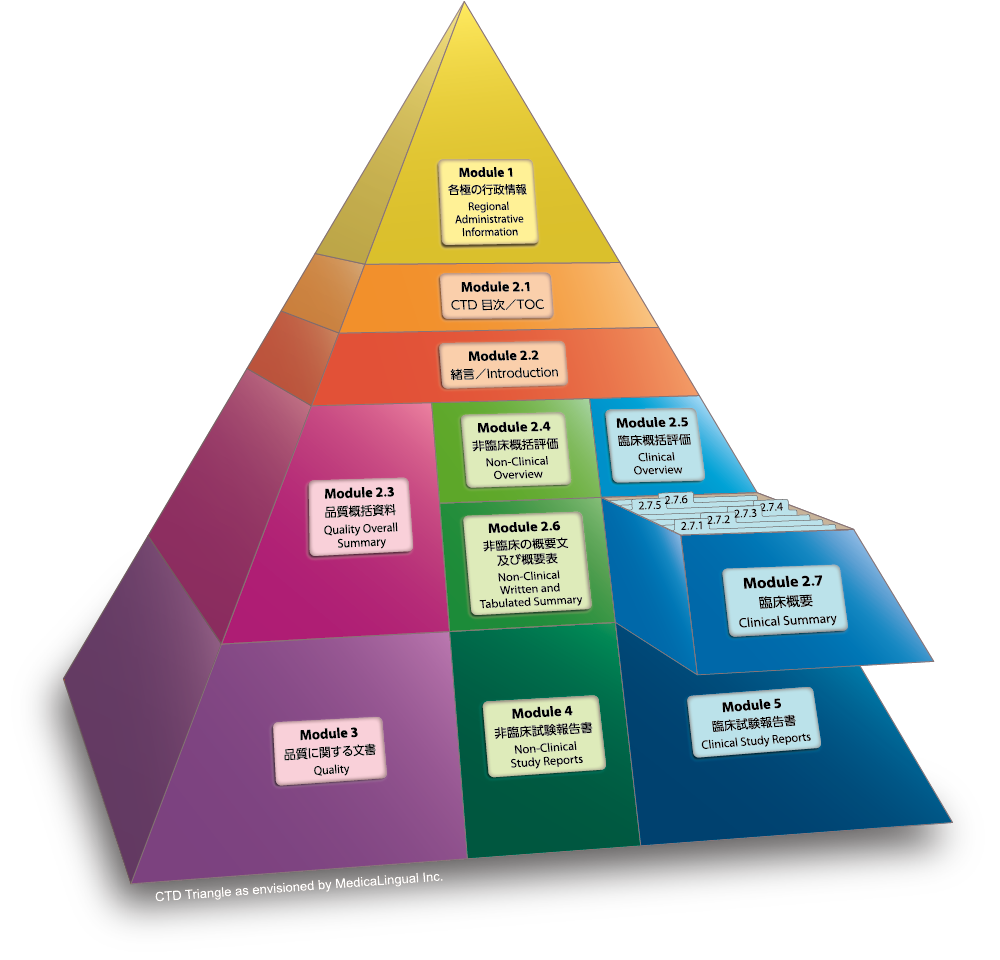
薬生薬審発0202第1号(平成29年2月2日)
ICH HARMONISED GUIDELINE- M4E(R2) – Dated 15 June 2016
Module 2.7 臨床概要
2.7.3 臨床的有効性の概要
Module 2.7 CLINICAL SUMMARY
2.7.3 Summary of Clinical Efficacy
2.7.3.4 推奨用法・用量に関する臨床情報の解析
本項では、有効性における用量-反応又は血中濃度-反応関係(用量-血中濃度関係を含む)、そして投与量の選択及び投与間隔の選択のために使われた全ての資料の概要と分析結果を記載すること。非臨床試験からの関連するデータを引用し、薬物動態試験、臨床薬理試験、比較対照試験、非対照試験を要約して、用量-反応又は血中濃度-反応関係を説明すること。第2.7.2.2項で要約した薬物動態試験と薬力学試験については、その要約を繰り返し記述せず、参照しながら内容を引用する方が適切な場合もある。
2.7.3.4 Analysis of Clinical Information Relevant to Dosing Recommendations
This section should provide an integrated summary and analysis of all data that pertain to the dose-response or blood level-response relationships of effectiveness (including dose-blood level relationships), and thus have contributed to dose selection and choice of dose interval. Relevant data from nonclinical studies may be referenced, and relevant data from pharmacokinetic studies, other clinical pharmacology studies, and controlled and uncontrolled clinical studies should be summarised to illustrate these dose-response or blood level-response relationships. For pharmacokinetic and pharmacodynamic studies from which data have been summarised in Section 2.7.2.2, it may be appropriate to draw upon those data in this summary while cross-referencing the summaries in Section 2.7.2.2, without repeating those summaries.
これらのデータがいかに推奨する用法・用量を裏付けているかについての解釈は「臨床に関する概括評価」に記載されるものであるが、本項では、当該用法・用量(開始用量と最大用量、用量漸増法、用量個別化のための注意事項を含む)を推奨するために使用された個々の試験の結果と試験を総括的に分析し得られた結果を要約すること。また、非線形性の薬物動態、効果発現の遅延、耐薬性の発現、酵素誘導等による比較的単純な用量-反応や血中濃度-反応関係からの逸脱についてもこの項に記載すること。
While the interpretation of how these data support specific dosing recommendations should be supplied in the Clinical Overview document, the individual study results and any cross-study analyses that will be used to support the dosing recommendations (including the recommended starting and maximal doses, the method of dose titration, and any other instructions regarding individualisation of dosage) should be summarised here. Any identified deviations from relatively simple dose-response or blood-level response relationships due to non-linearity of pharmacokinetics, delayed effects, tolerance, enzyme induction, etc. should be described.
患者の年齢、性別、人種、疾患、その他の要因により生じる用量-反応関係の差異を示すデータを記載すること。薬物動態的、薬力学的反応の差異を示すデータも本項にて提示するか、第2.7.2項を引用すること。差異が見られない場合でも、どのような検討を行ったかその方法を記載すること(例:部分集団における特別な試験、部分集団別有効性分析、被験薬の血中濃度測定)。
Any evidence of differences in dose-response relationships that result from a patient’s age, sex, race, disease, or other factors should be described. Any evidence of different pharmacokinetic or pharmacodynamic responses should also be discussed, or discussions in Section 2.7.2 can be cross-referenced. The ways in which such differences were looked for, even if no differences were found, should be described (e.g., specific studies in subpopulations, analysis of efficacy results by subgroup, or blood level determinations of the test drug).










